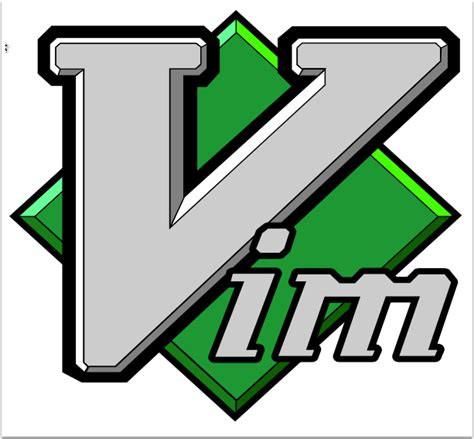Explore the World's Best Ideas
Join today and uncover 100+ curated journeys from 50+ topics. Unlock access to our mobile app with extensive features.
VIMTUTOR ver 1.7
This tutor is designed to describe enough of the commands that you will be able to easily use Vim as an all-purpose editor.
It is important to remember that this tutor is set up to teach by use. That means that you need to execute the commands to learn them properly. If you only read the text, you will forget the commands!
2
16 reads
Lesson 1 SUMMARY
1. The cursor is moved using either the arrow keys or the hjkl keys.
h (left) j (down) k (up) l (right)
2. To start Vim from the shell prompt type:
vim FILENAME
2
13 reads
3. To exit Vim type:
:q! to trash all changes.
OR type:
:wq to save the changes.
4. To delete the character at the cursor type: x
5. To insert or append text type:
i type inserted text insert before the cursor
A type appended text append after the line
NOTE: Pressing will place you in Normal mode or will cancel an unwanted and partially completed command.
2
4 reads
Lesson 2 SUMMARY
1. To delete from the cursor up to the next word type: dw
2. To delete from the cursor up to the end of the word type: de
3. To delete from the cursor to the end of a line type: d$
4. To delete a whole line type: dd
5. To repeat a motion prepend it with a number: 2w
6. The format for a change command is: operator [number] motion
where:
operator - is what to do, such as d for delete
[number] - is an optional count to repeat the motion
motion - moves over the text to operate on, such as w (word), e (end of word), $ (end of the line), etc.
2
3 reads
Lesson 3 SUMMARY
1. To put back text that has just been deleted, type p. This puts the deleted text AFTER the cursor (if a line was deleted it will go on the line below the cursor).
2. To replace the character under the cursor, type r and then the character you want to have there.
3. The change operator allows you to change from the cursor to where the motion takes you. eg. Type ce to change from the cursor to the end of the word, c$ to change to the end of a line.
4. The format for change is:
c [number] motion
2
3 reads
Lesson 4 SUMMARY
1. CTRL-G displays your location in the file and the file status.
G moves to the end of the file.
number G moves to that line number.
gg moves to the first line.
2. Typing / followed by a phrase searches FORWARD for the phrase.
Typing ? followed by a phrase searches BACKWARD for the phrase.
After a search type n to find the next occurrence in the same direction
or N to search in the opposite direction.
CTRL-O takes you back to older positions, CTRL-I to newer positions.
2
3 reads
3. Typing % while the cursor is on a (,),[,],{, or } goes to its match.
4. To substitute new for the first old in a line type :s/old/new
To substitute new for all 'old's on a line type
:s/old/new/g
To substitute phrases between two line #'s type
:#,#s/old/new/g
To substitute all occurrences in the file type
:%s/old/new/g
To ask for confirmation each time add 'c'
:%s/old/new/gc
2
5 reads
Lesson 5 SUMMARY
1. :!command executes an external command.
Some useful examples are:
(Windows) (Unix)
:!dir :!ls - shows a directory listing.
:!del FILENAME :!rm FILENAME - removes file FILENAME.
2. :w FILENAME writes the current Vim file to disk with name FILENAME.
3. v motion :w FILENAME saves the Visually selected lines in file FILENAME.
4. :r FILENAME retrieves disk file FILENAME and puts it below the cursor position.
5. :r !dir reads the output of the dir command and puts it below the cursor position.
2
5 reads
Lesson 6 SUMMARY
1. Type o to open a line BELOW the cursor and start Insert mode.
Type O to open a line ABOVE the cursor.
2. Type a to insert text AFTER the cursor.
Type A to insert text after the end of the line.
3. The e command moves to the end of a word.
4. The y operator yanks (copies) text, p puts (pastes) it.
5. Typing a capital R enters Replace mode until is pressed.
2
3 reads
6. Typing ":set xxx" sets the option "xxx".
Some options are:
'ic' 'ignorecase' ignore upper/lower case when searching
'is' 'incsearch' show partial matches for a search phrase
'hls' 'hlsearch' highlight all matching phrases
You can either use the long or the short option name.
7. Prepend "no" to switch an option off: :set noic
2
4 reads
Lesson 7 SUMMARY
1. Type :help or press or to open a help window.
2. Type :help cmd to find help on cmd .
3. Type CTRL-W CTRL-W to jump to another window.
4. Type :q to close the help window.
5. Create a vimrc startup script to keep your preferred settings.
6. When typing a : command, press CTRL-D to see possible completions.
Press to use one completion.
2
7 reads
IDEAS CURATED BY
CURATOR'S NOTE
ViM is a blessing. Learn it and you will be spoiled forever.
“
Other curated ideas on this topic:
Read & Learn
20x Faster
without
deepstash
with
deepstash
with
deepstash
Personalized microlearning
—
100+ Learning Journeys
—
Access to 200,000+ ideas
—
Access to the mobile app
—
Unlimited idea saving
—
—
Unlimited history
—
—
Unlimited listening to ideas
—
—
Downloading & offline access
—
—
Supercharge your mind with one idea per day
Enter your email and spend 1 minute every day to learn something new.
I agree to receive email updates

